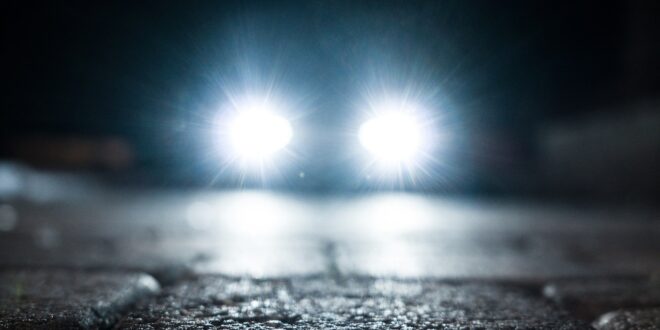Winter’s shorter days mean we’re driving more often in darkness, fading light, and difficult weather conditions. With this, comes the challenge of using our vehicle lights safely, legally, and to our best advantage. So, what advice do the experts have for us on this important subject? Read on to find out!
Full beam headlamps
You are legally required to turn on your vehicle headlights from 30 minutes after sunset until 30 minutes before sunrise. If you’re not sure just when this is in your part of the country, head to this helpful site to get the details (and consider printing them off to keep in your car).
Full beam lights may only be used on full strength on the open road when there are no other vehicles directly in front of you, or coming towards you.
When overtaking, you are permitted to use full beam lights, but only if there is no chance they will dazzle the driver of the vehicle you are overtaking.
You can use full beam headlights in settings with street lights, but only if you’re not following another vehicle and there are no other vehicles coming towards you. However, in street-lit situations, full beam should only be used if you can’t see clearly what’s ahead.
Tip: If drivers are flashing their lights at you at night (something that should never be done) it may be because you haven’t dipped or they think you haven’t dipped your headlights. If the latter, it’s probably because you need the angle of your vehicle lights adjusted. In which case, head to your vehicle service centre to have the job done.
The low-down on dipping
Dip your lights whenever another vehicle is coming towards you or when you are following another vehicle. You must also dip when approaching a police officer who is directing traffic, and when your vehicle is parked.
When driving in fog, use front and rear fog lights, if your vehicle has them (park lights won’t cut the mustard, so don’t be tempted to use them). If your vehicle doesn’t have fog lights, dipping your full beam lights will help – you’ll see less distance ahead, but have a clearer view of the road directly in front (so adjust your speed accordingly).
Tips:
- If you are driving an unfamiliar vehicle, make yourself familiar with how to quickly dip your headlamps when required.
- Keep your car lights and windows (inside and out), and rear vision mirrors clean – it will help you see better in difficult driving conditions. If you wear spectacles, make sure they’re clean before you drive.
Prepared with parking lights
If you don’t know where your vehicle’s parking lights (sometimes referred to as ‘sidelights,’) are, it’s probably because they are included in the cluster of lights which also houses your full beam and dip lights.
Activate your parking lights when your vehicle is parked on a dark street or road that does not have street lighting. It will help other vehicles see yours.
Tip: Park lights are designed to use just a very small proportion of your car’s battery, so in normal circumstances, they can be left on all night. A flat battery following the overnight use of park lights suggests your car battery is not in a healthy state, and should be checked out at your vehicle service centre.
Hazard lights
These useful lights are helpful in situations where a temporary hazard to traffic exists (such as when your vehicle has broken down and you’re waiting for help). Unless you are a goods vehicle, and operating as such at the time, hazard lights are not to be used, and especially not for the purpose of being visible when illegally double parked!
Tip: Carry a torch, high-viz vest, and approved reflective triangle in your car so you and your vehicle are as visible as possible to traffic in a hazard situation.










Join the Discussion
Type out your comment here:
You must be logged in to post a comment.